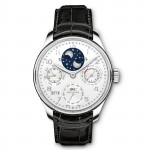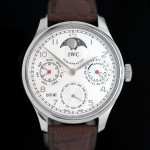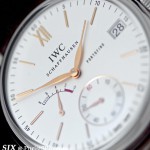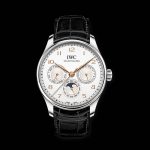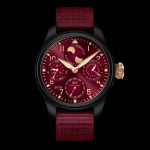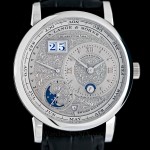Hands On: IWC Portofino Perpetual Calendar
A straightforward take on a classic complication.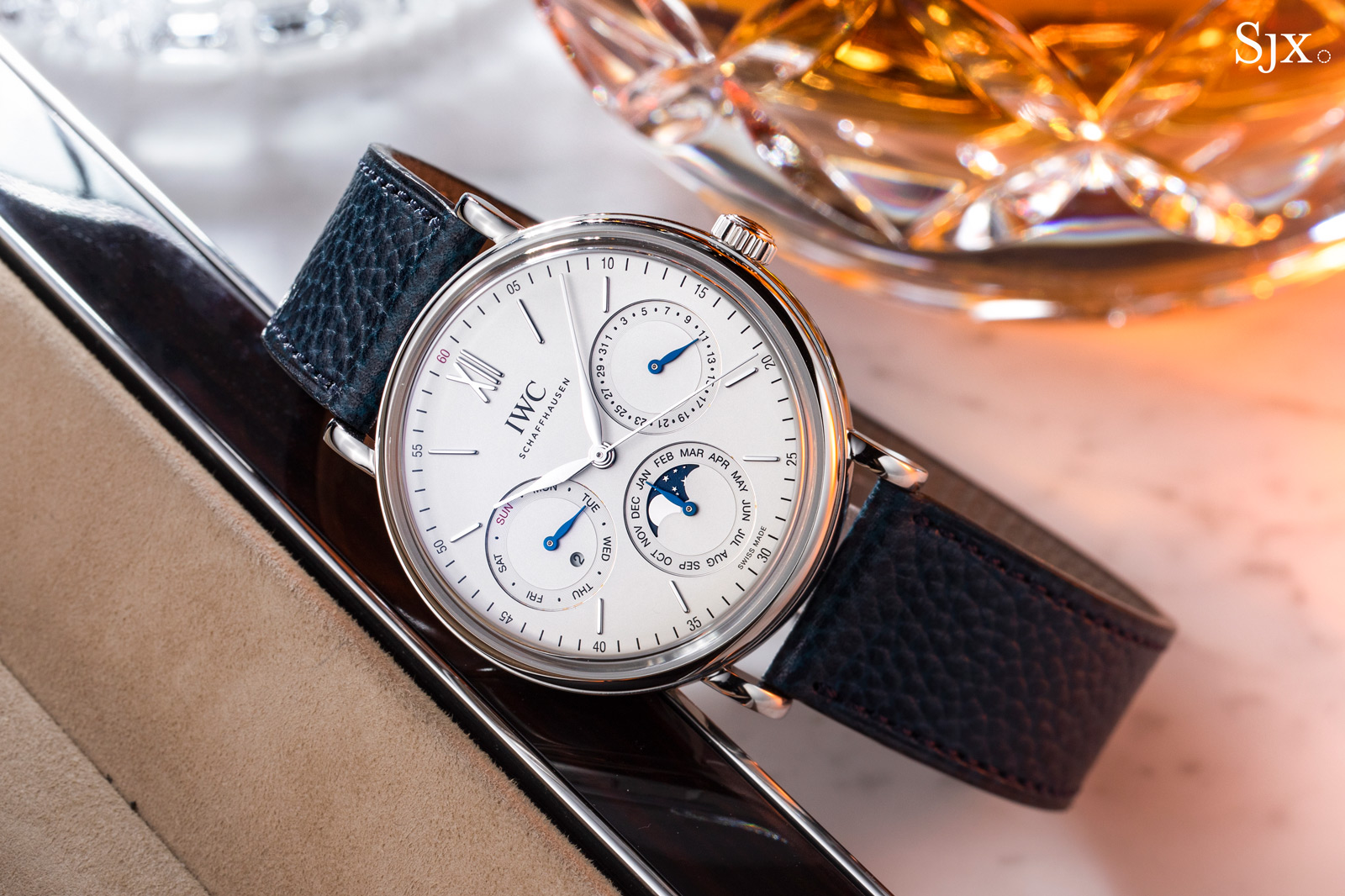
IWC has a suite of instantly recognisable models synonymous with the brand, namely the Pilot’s Watches and of course, the Portugieser. But one collection does get as much recognition as its peers, despite being almost 40 years old. Named after the famous seaside city in Italy, the Portofino was introduced in 1984 (though the inaugural model didn’t yet have the Portofino name at the time) as an oversized pocket watch-style wristwatch, something of a clarion call to persist with mechanical watchmaking after the Quartz Crisis.
Now the brand has revived one of the classics from the line with the Portofino Perpetual Calendar. At 40 mm in diameter, it’s the most compact of IWC’s perpetual calendars and is equipped with an in-house movement from the 82000 family.
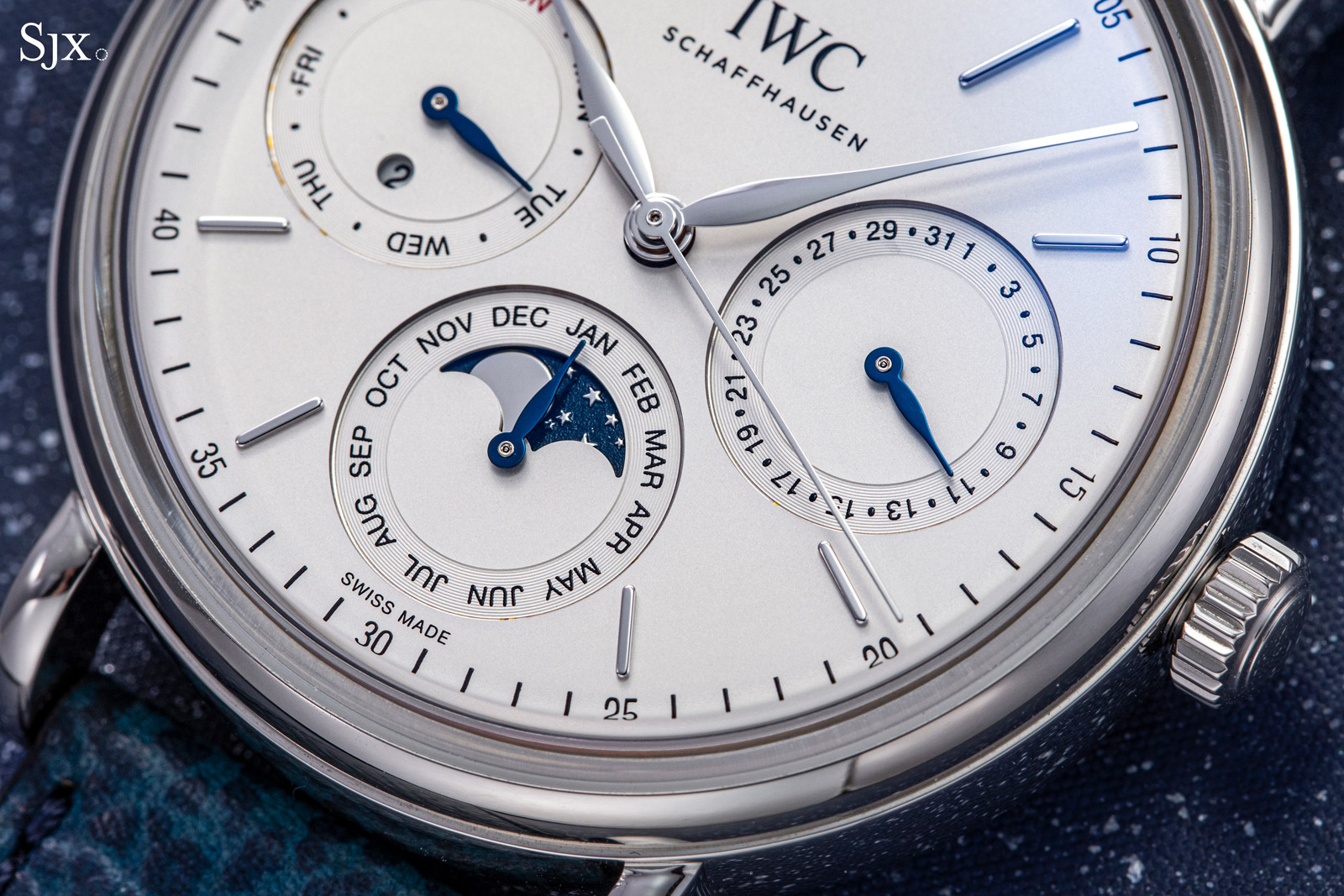
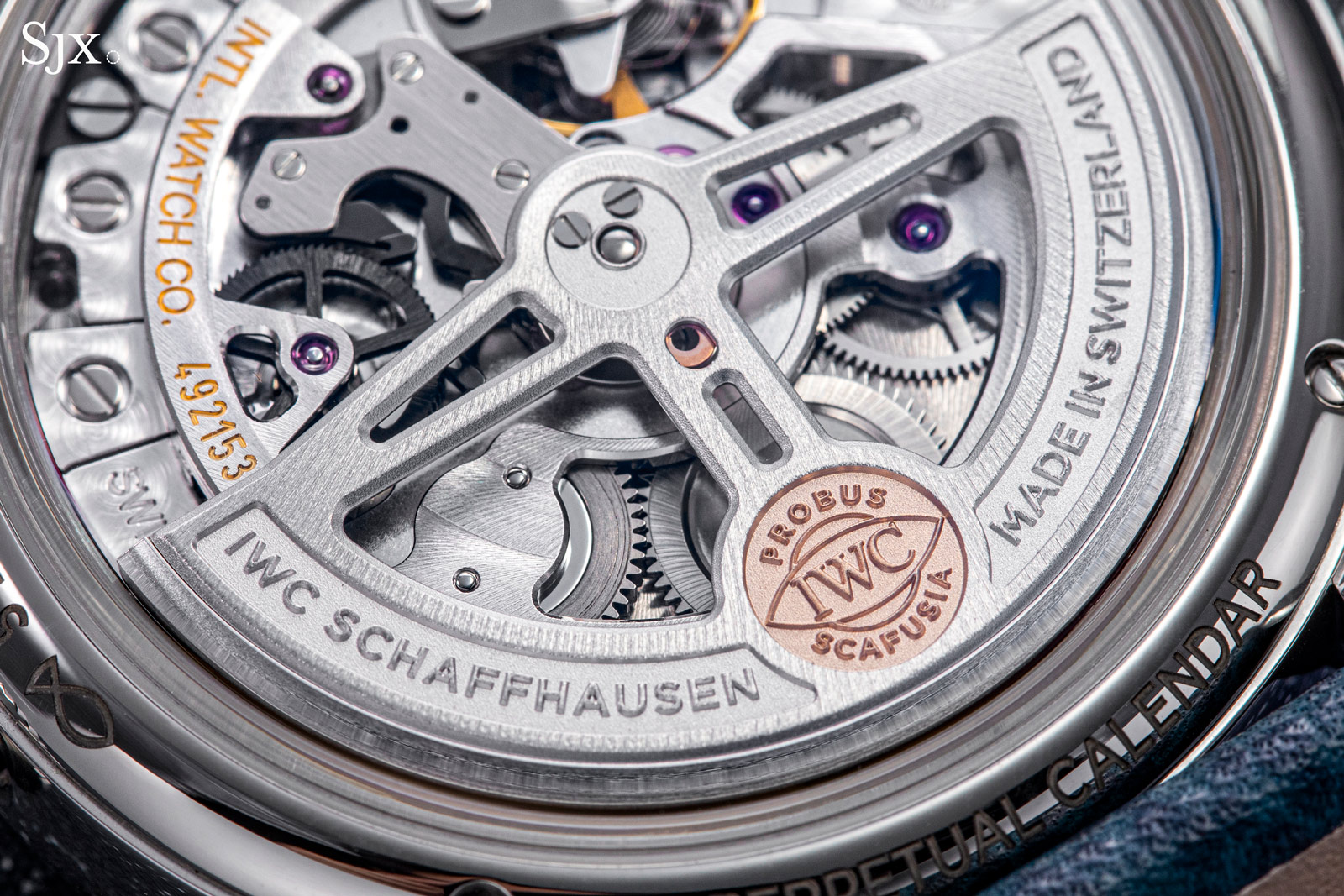
Initial thoughts
The perpetual calendar is a sought-after complication for its utility but also its aesthetics, especially when it includes a moon phase, which adds a touch of romanticism to the design. IWC’s latest take on the complication is straightforward, practical, and priced reasonably enough. In fact, it’s essentially a visually-simplified version of the Portugieser Perpetual Calendar 42, which uses the same movement but inside a larger case.
While not revolutionary in technical terms, the Portofino Perpetual Calendar is a solid performer with a concise design. It retains all the features that made the 1990s original appealing but adds a few contemporary touches in both design and the in-house base movement.
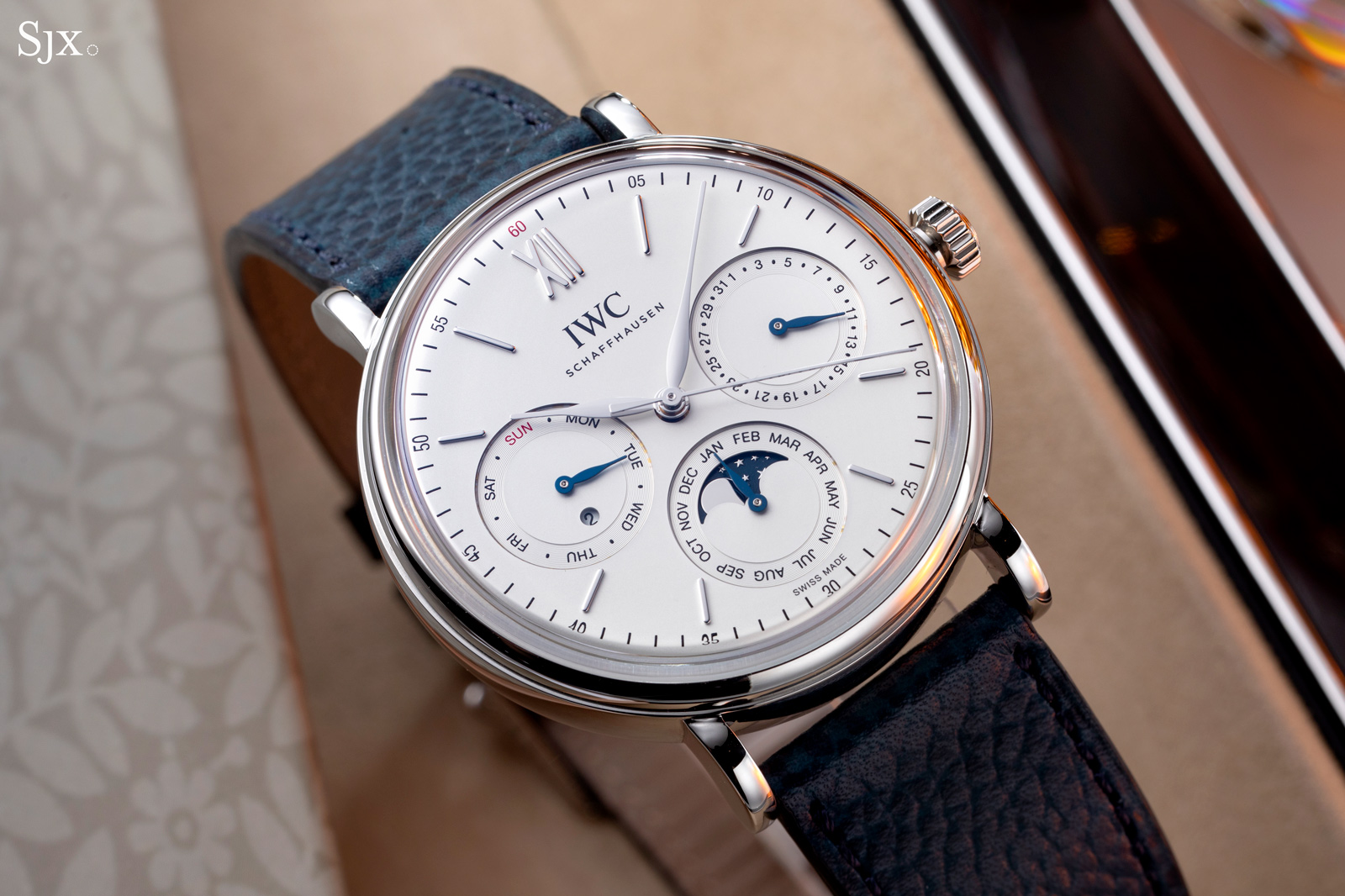
The legible and neat dial has a restrained elegance, resulting in an orderly, legible appearance. Consumers of this particular complication often ask the same question: can the calendar be easily read, preferably within five seconds? The answer in this case is yes, although the calendar markings are small, though that is typical of a calendar that relies on sub-dials.
And the concise design also extends to the details like the sans serif typography used for calendar and numerals and the removal of the four-digit year indicator that was long standard for IWC’s perpetual calendars.
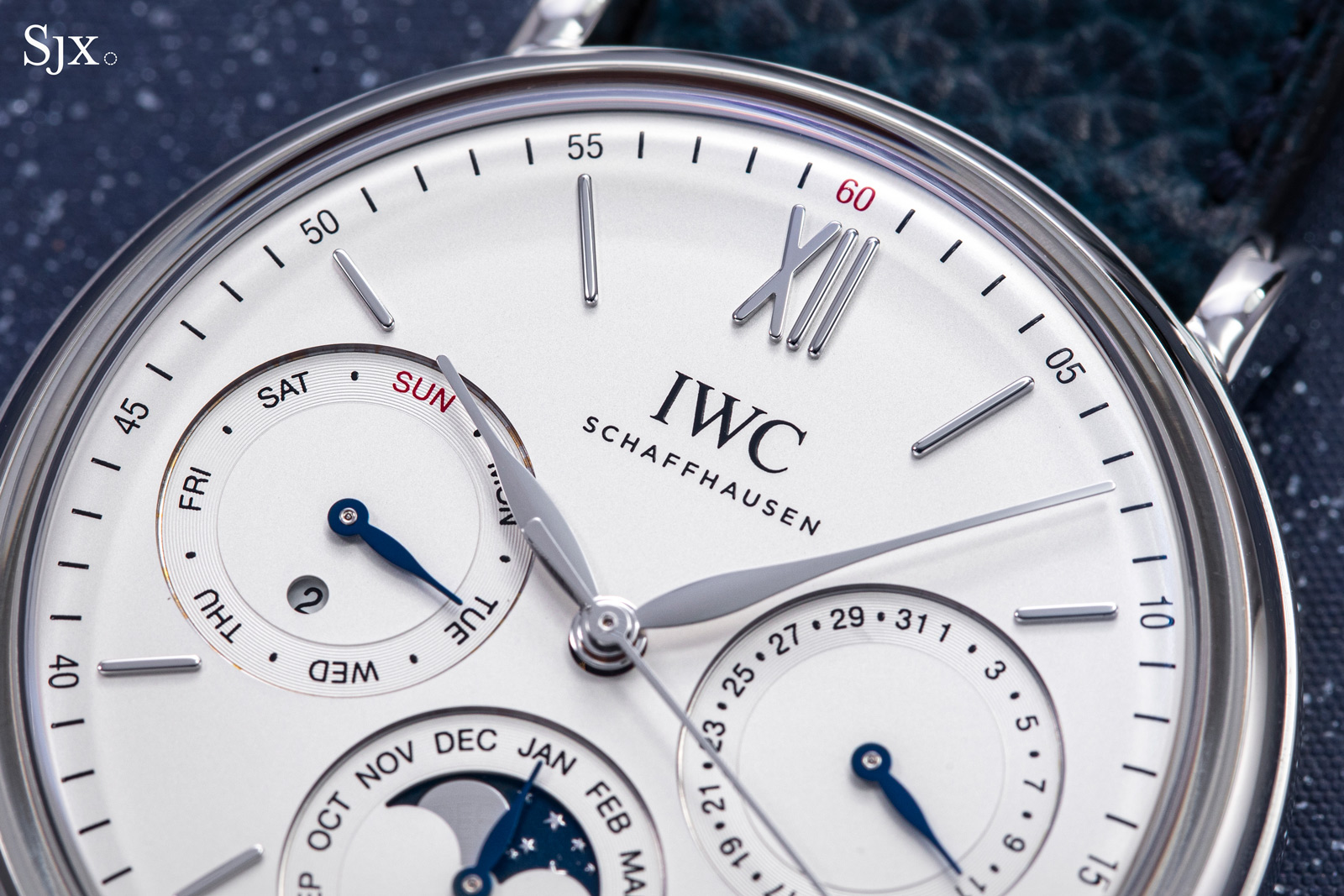
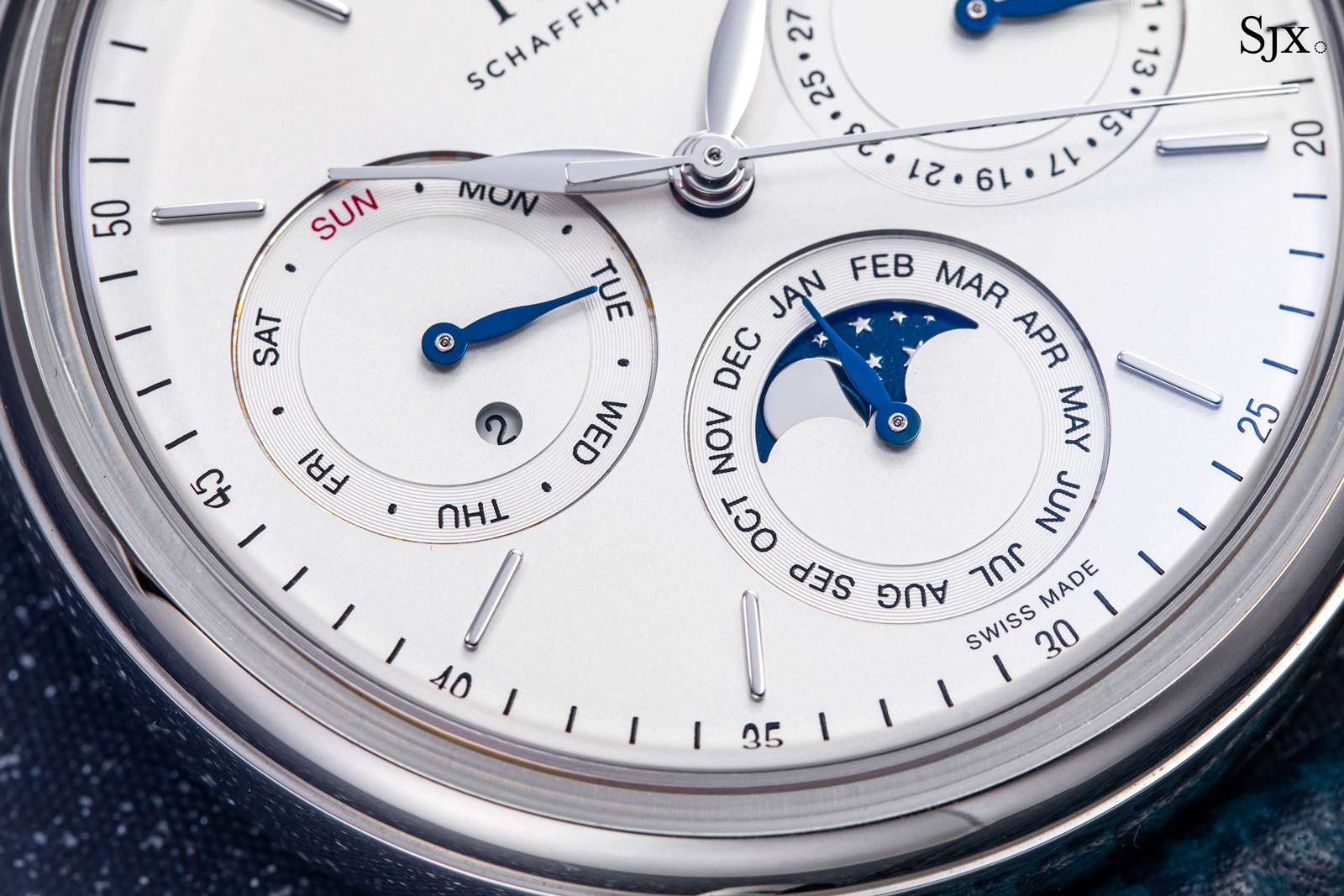
But its most important feature is arguably the case size. At 40 mm, it is the brand’s smallest perpetual calendar and compact even relative to the broader market. This means it is easily wearable on almost any wrist.
And it is also thinner at 12.7 mm compared to its Portugieser counterpart that clocks in at 13.8 mm, which arguably makes it more of a dress watch.
All that comes at a price that’s about US$1,000 less than its Portugieser equivalent. That does give the Portofino perpetual an edge in terms of value, though the Portugieser does offer a bit more in terms of the case and dial execution.
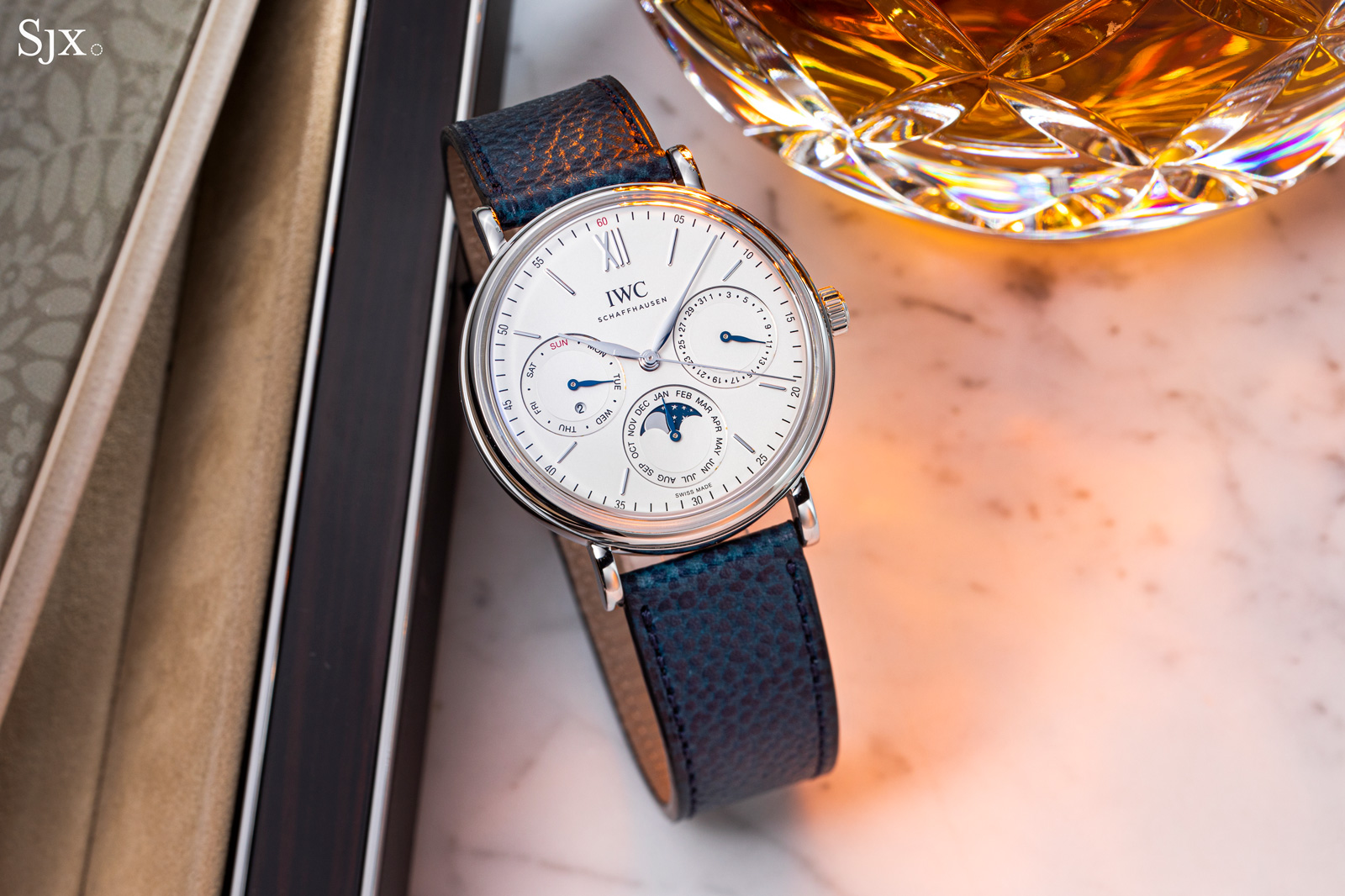
Streamlining the calendar
The new Portofino Perpetual Calendar is a reinterpretation of the ref. 3541 produced in the 1990s. It was powered by the cal. 37582, an ETA 2892 combined with the perpetual calendar module conceived by the IWC’s famous watchmaker Kurt Klaus. Known for its reliability and robustness, the ETA 2892 is also slim, making it the perfect candidate for his calendar module. As a result, the ref. 3541 was a compact watch at only 35 mm in diameter and about 11 mm high.
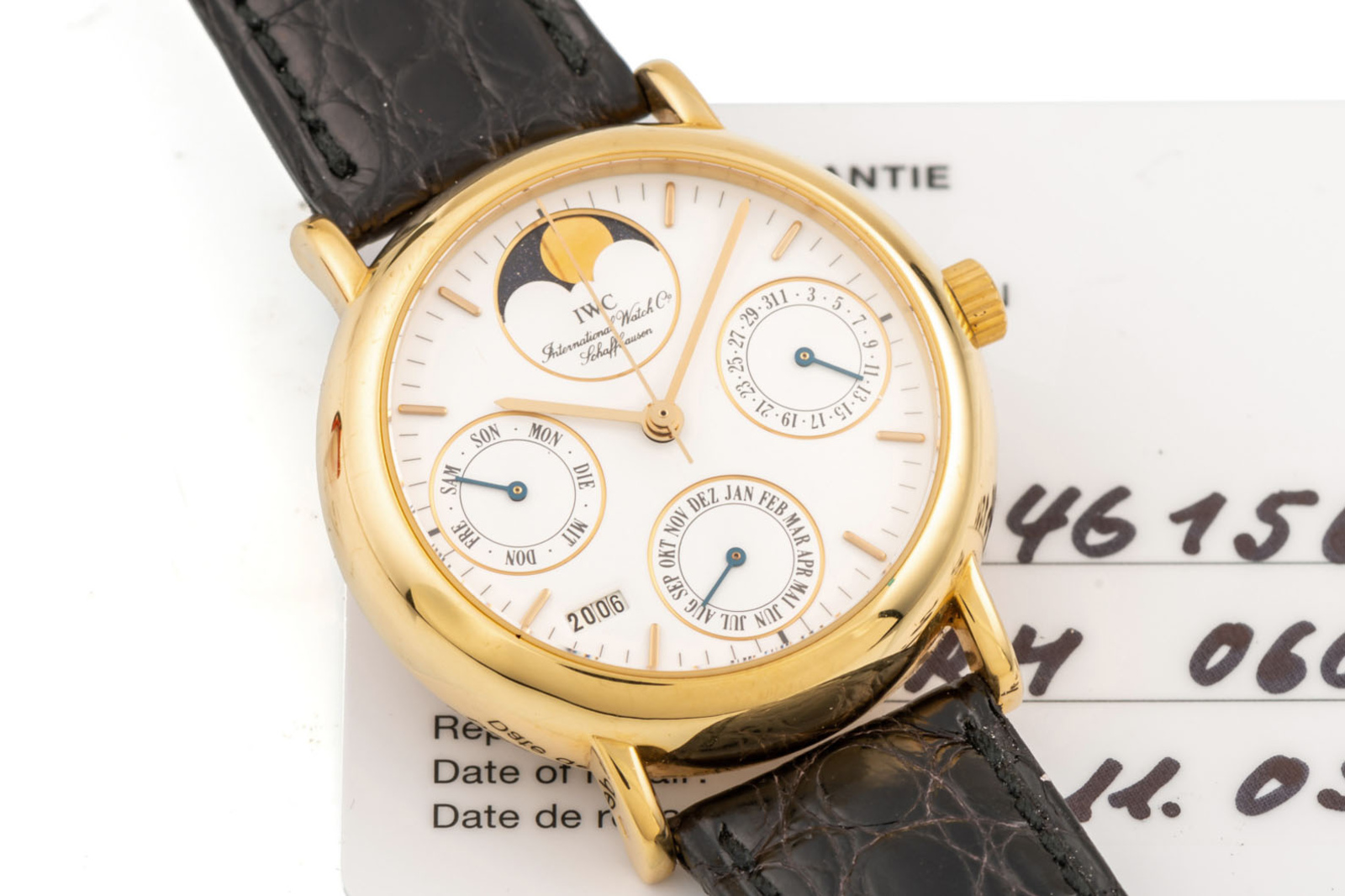
An example of the Portofino Perpetual Calendar ref. 3541 from the 1990s. Image – Antiquorum
Echoing the original in both simplicity and size, the new Portofino Perpetual Calendar is 40 mm in diameter, while the case height is 12.7 mm, including a domed crystal.
That’s slightly tall but a consequence of the relatively thick base movement, which is the in-house cal. 82650. And like most IWC models, it is available in steel or 18k pink gold.
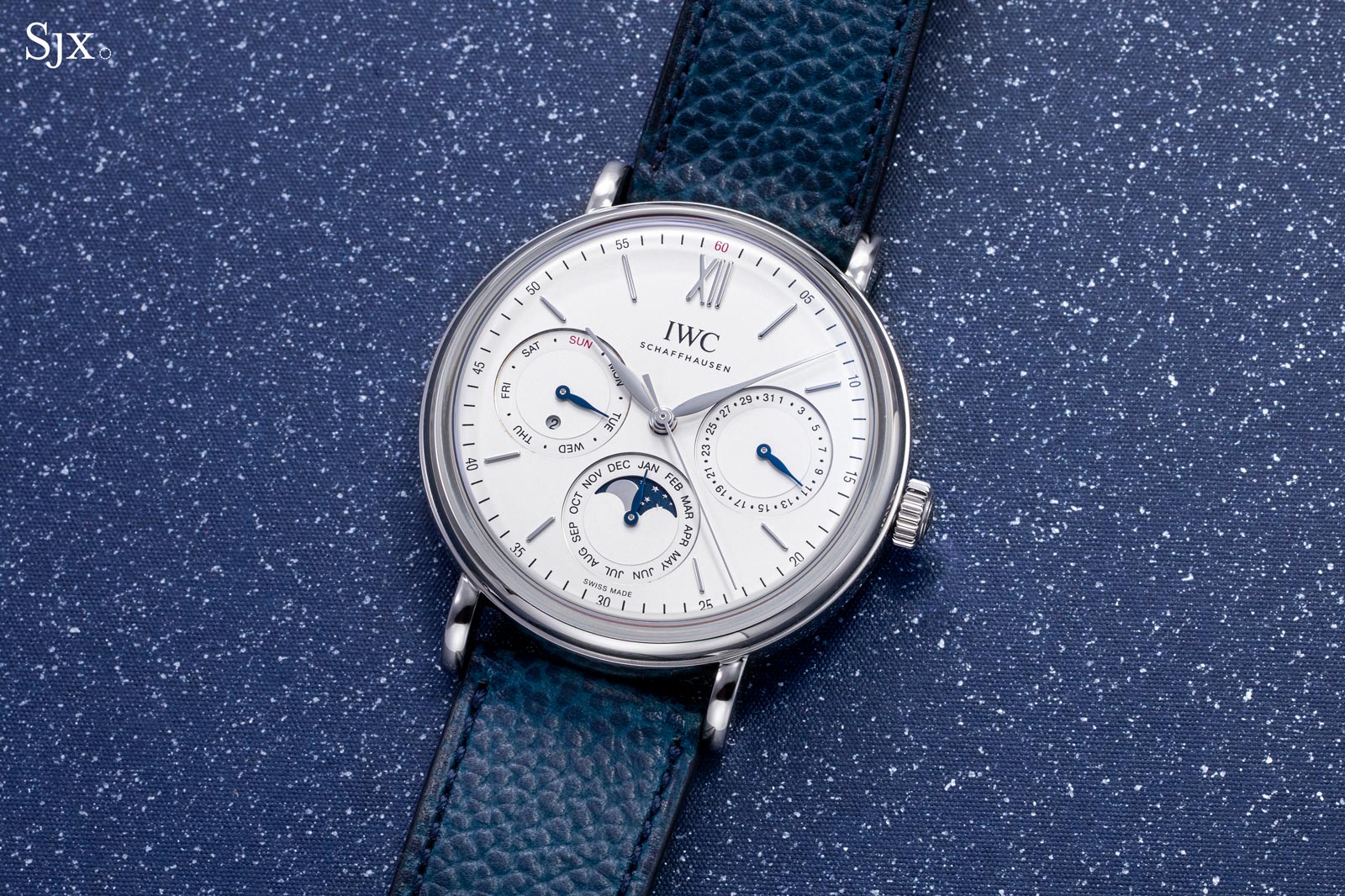
The case takes its cues from the 1990s original, so it’s all rounded and mirror polished. It is uncomplicated in both form and finish, which also means it’s missing some of the finishing details that its Portugieser cousin has.
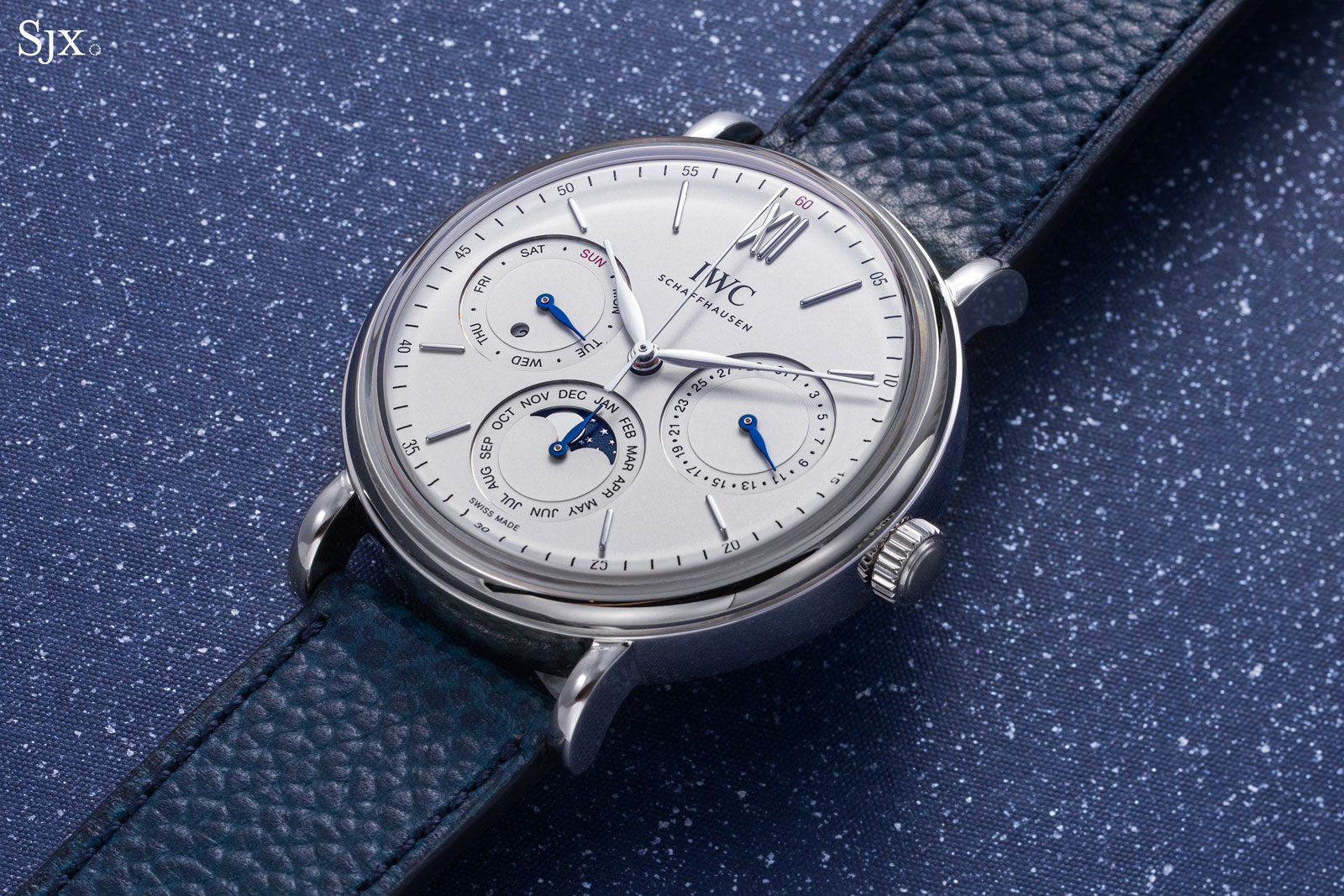
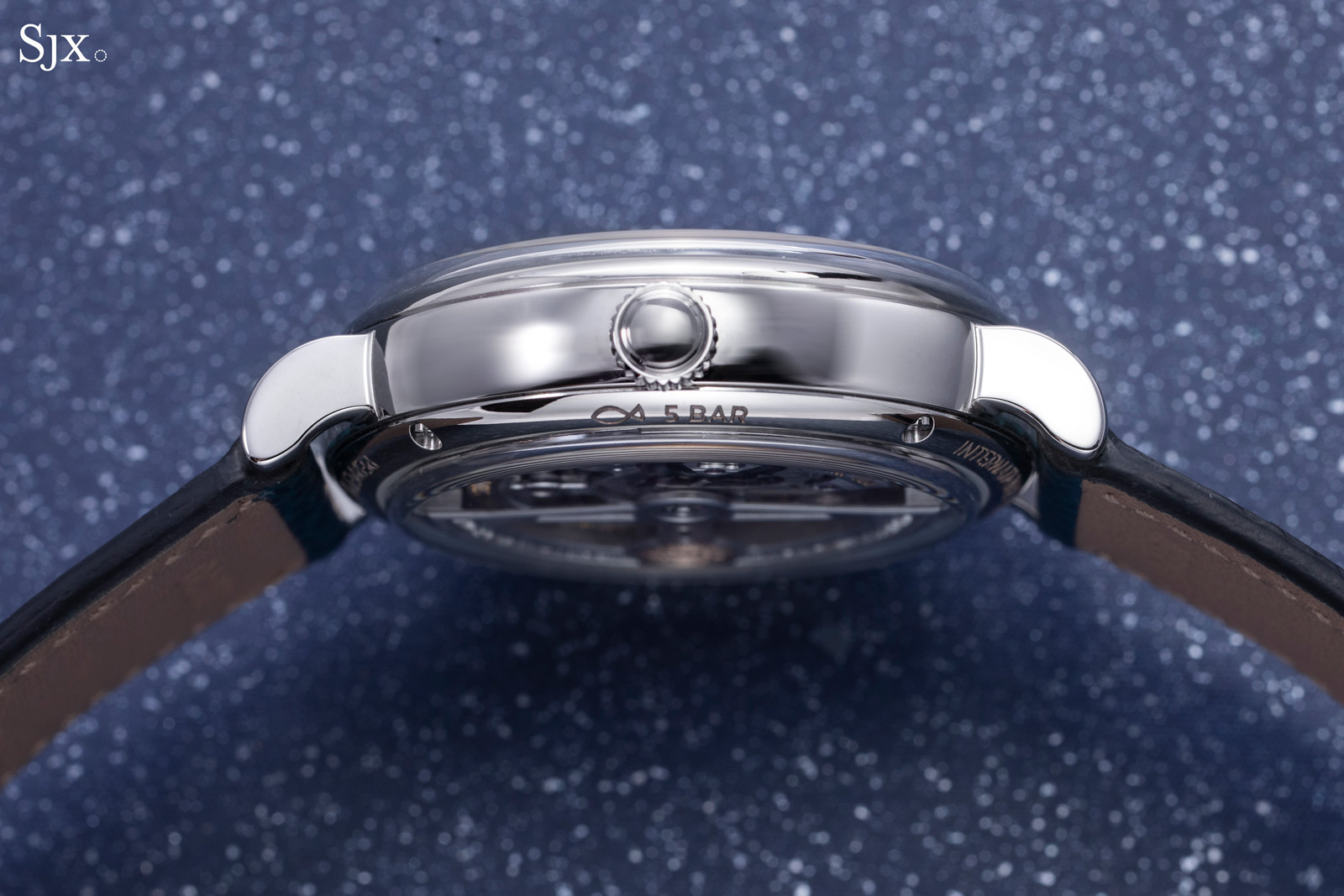
The dial is a fuss-free silvered affair that does away with anything superfluous in its design, giving it a clean aesthetic. Its hands and baton indices corresponding to the case metal for a clean look that’s almost monochromatic but livened up by the blued hands and moon phase.
At the same time, the numerals for the five-minute markers gives it a functional appearance, though the leaf-shaped hands bring a classical, retro feel.
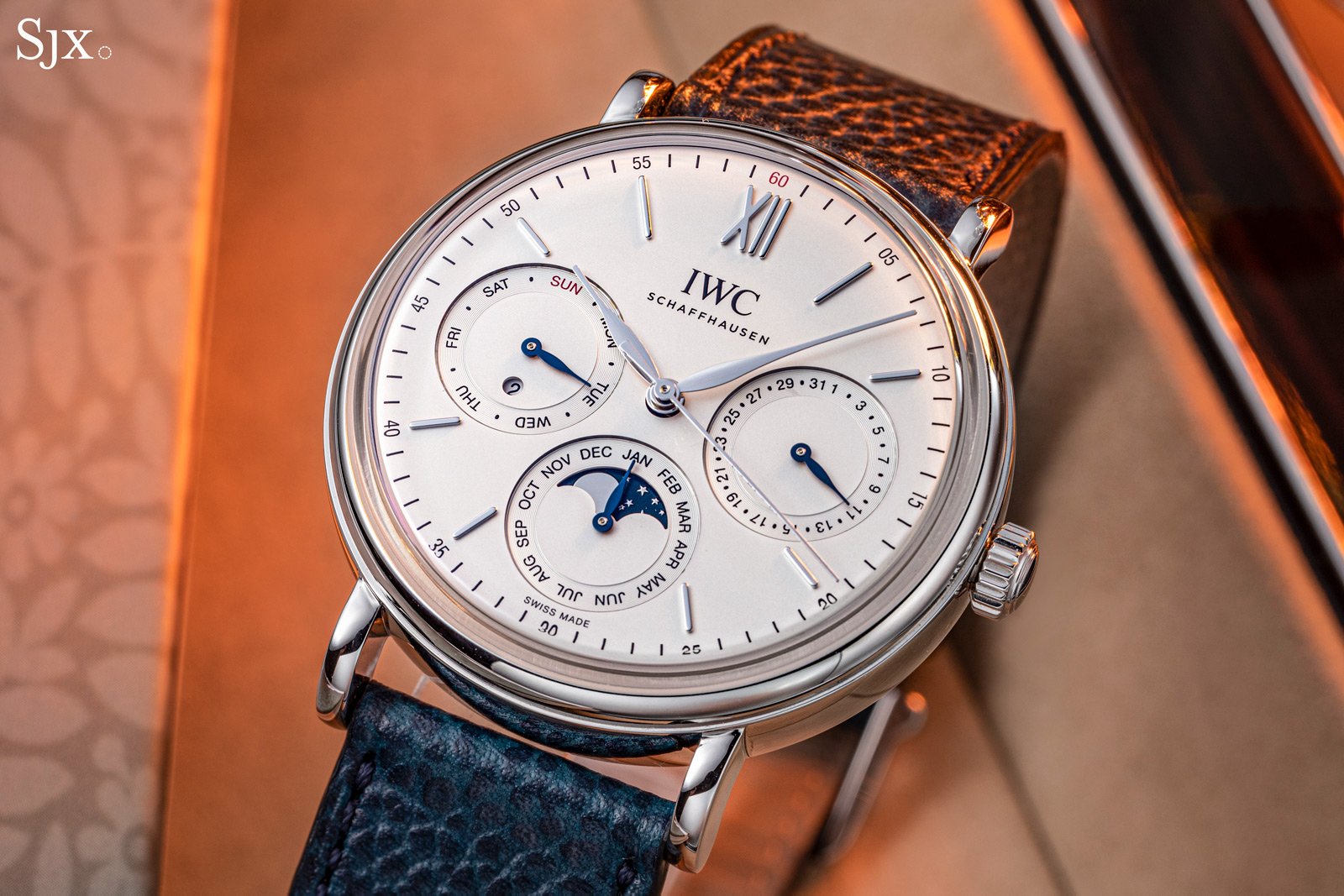
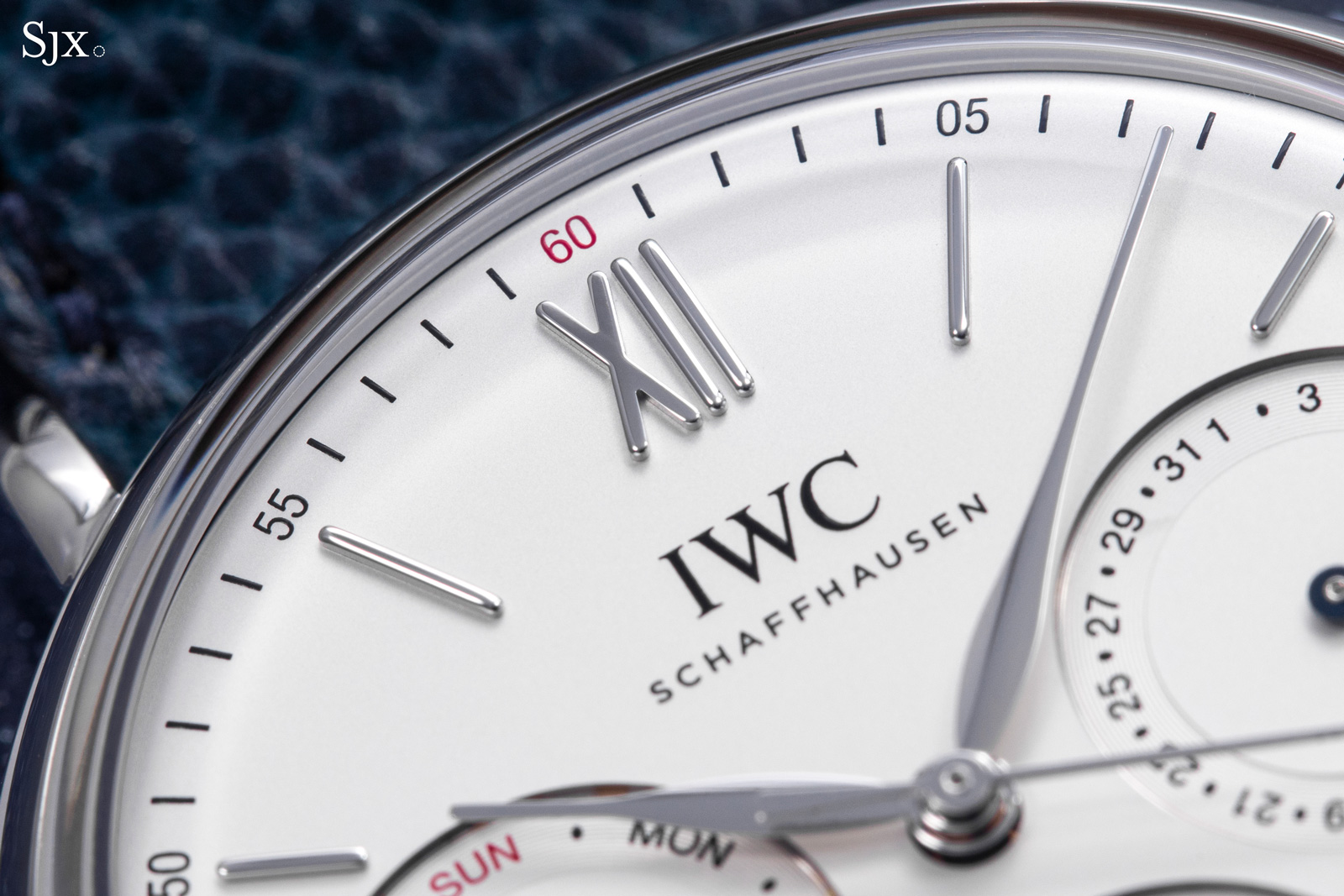
Each of the calendar indications is in conventional sub-dials with pointers. And replacing the four-digit year display is a leap year indicator in the form of a small aperture within the day-of-the-week register.
At six o’clock is the moon phase display that will have the moon and stars either rhodium or gold-plated, depending on the case material. Unlike most moon phase displays that are accurate to a day in 122.5 years, this is driven by a “precisely calculated reductionist gear train” that results in a one-day deviation after 577.5 years.
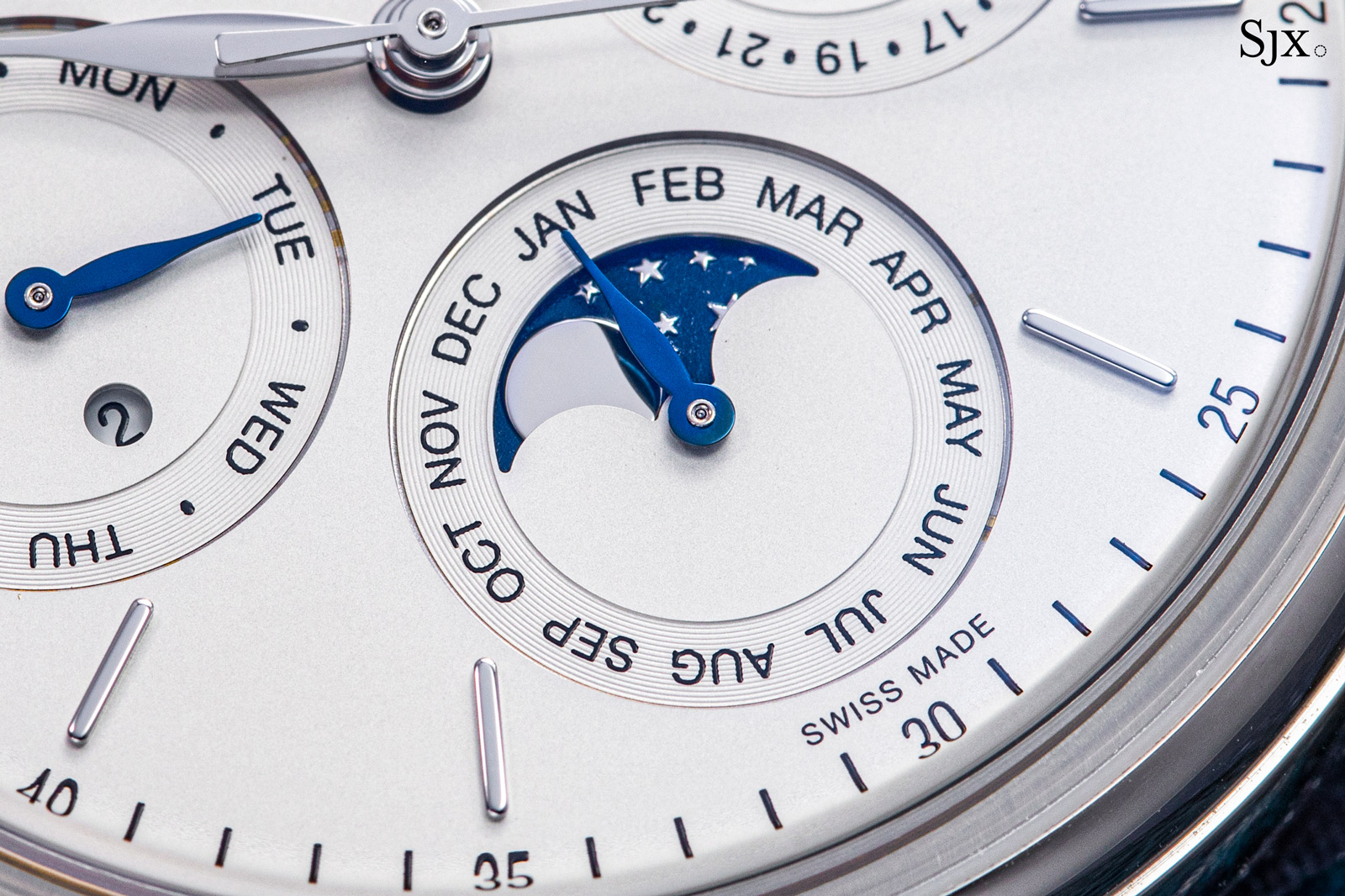
Like most contemporary IWCs, the case shows off the movement through the sapphire back. The ETA-based calibre in the 1990s original has been swapped for IWC’s proprietary cal. 82650, first introduced in the Portugieser Perpetual Calendar 42 in 2020.
Part of the 82000 family of movements, the cal. 82650 is one of the brand’s smallest in-house calibres, but nonetheless retains the brand’s signature Pellaton winding system and a respectable 60 hours of power reserve. Notably, the pawls and wheel of the Pellaton system are made of black ceramic, rendering them wear resistant.
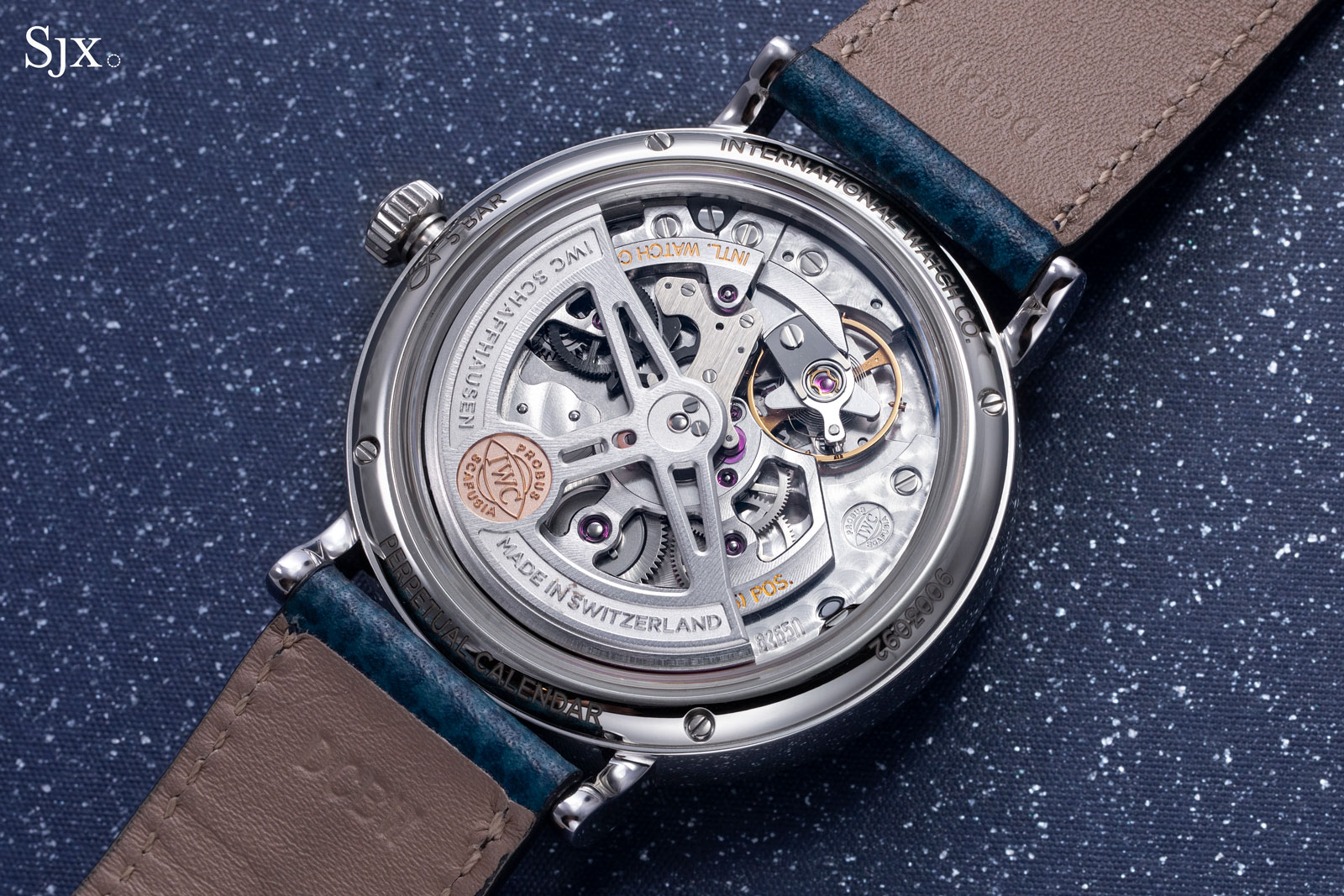
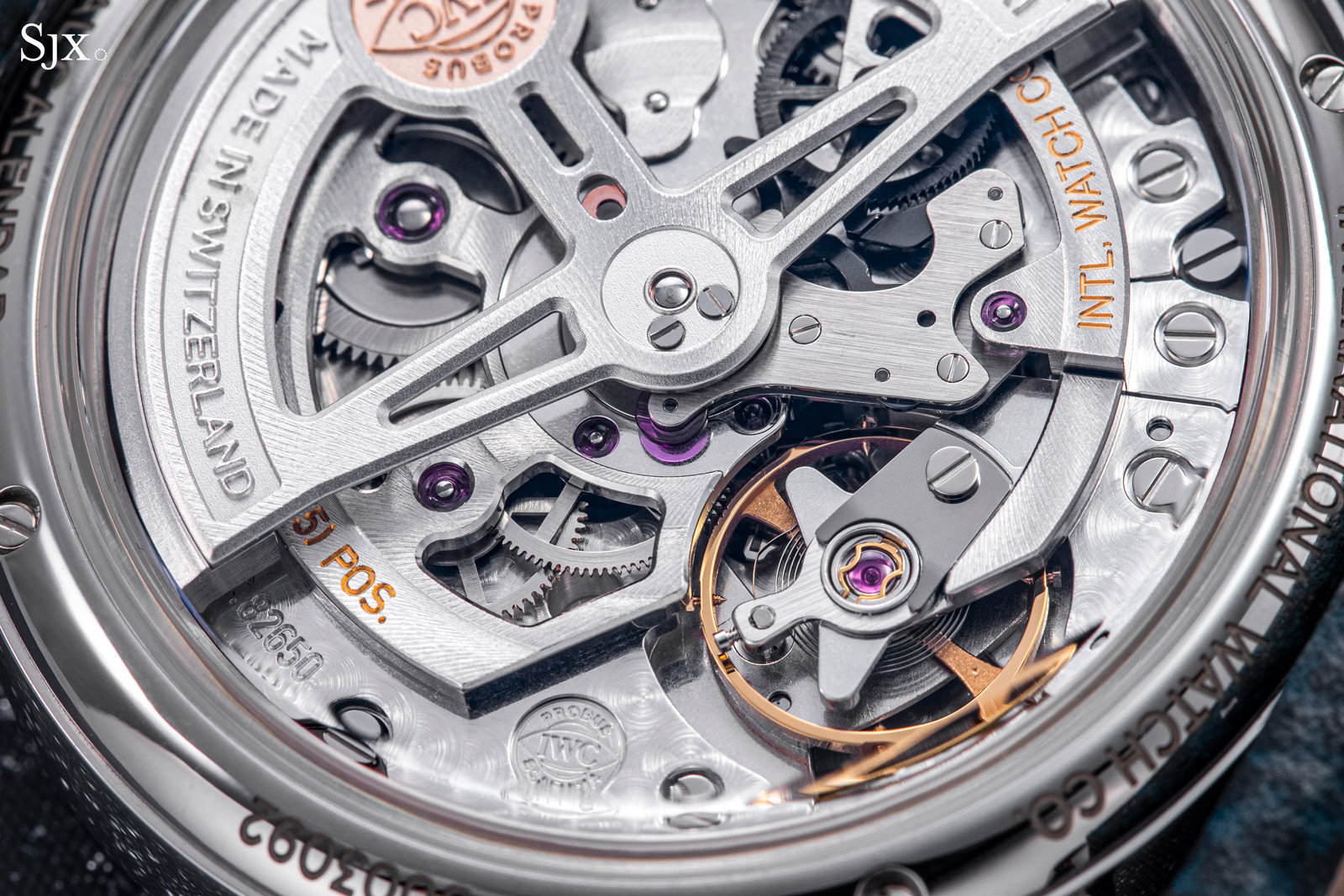
With open-worked bridges that reveal the gear train and winding mechanism, the movement is very much typical of IWC in terms of its aesthetic. In other words, it’s a relatively simple movement, but looks fancy in a good way.
The decoration is very much standard IWC. Though done industrially, the decoration is attractive in both form and colour. The open-worked bridges add texture to the movement, while the details like the bevelling and graining are done neatly.
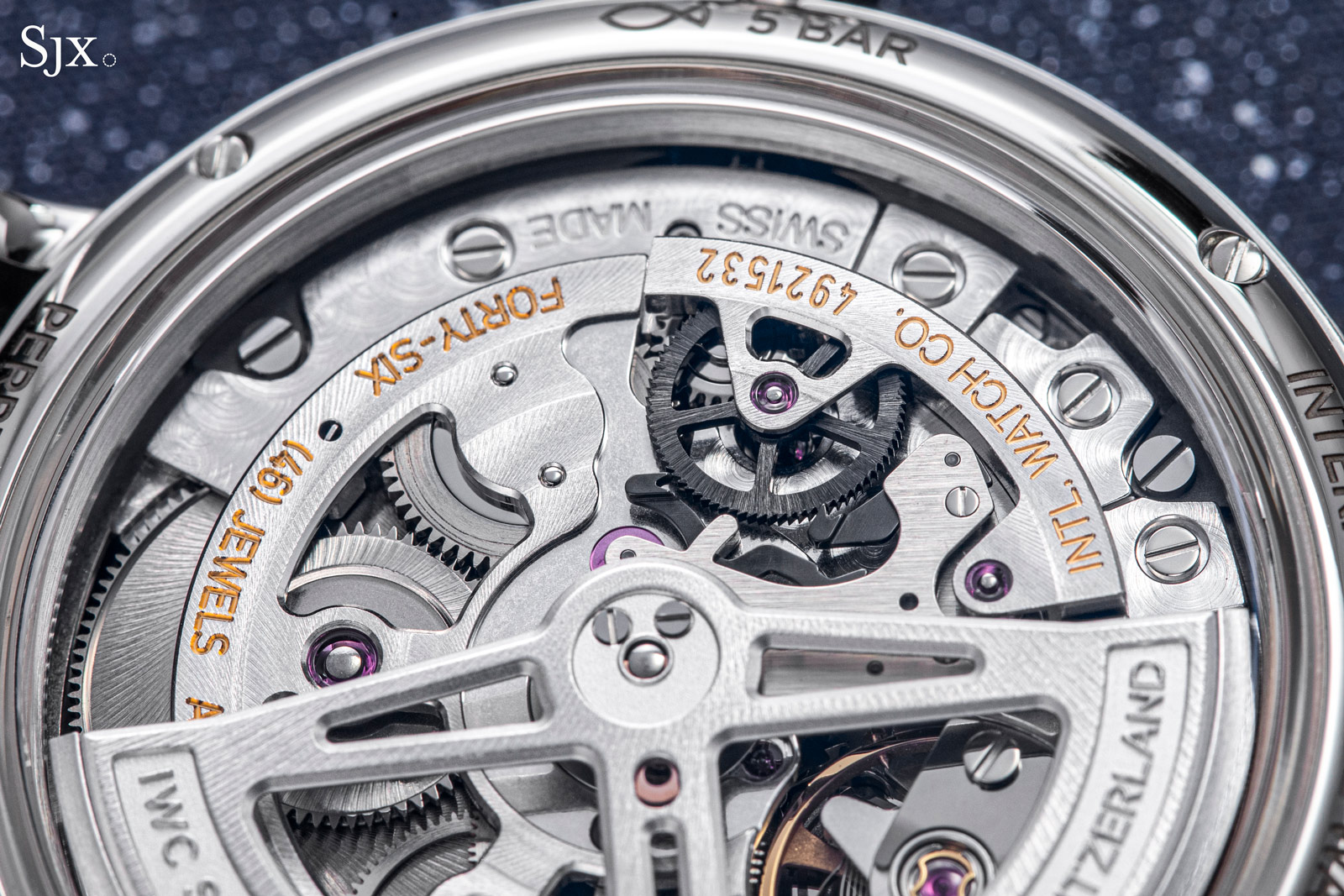
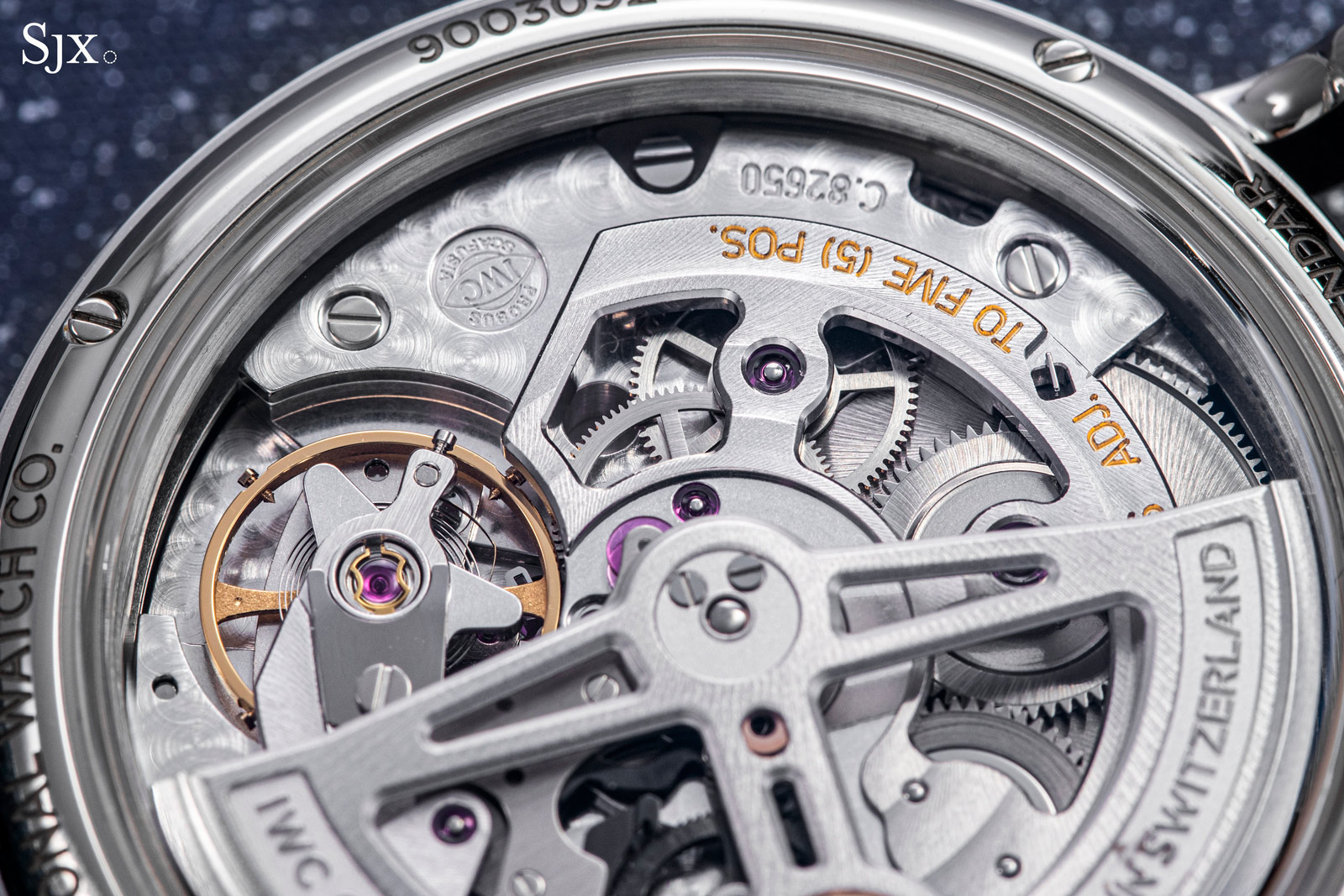
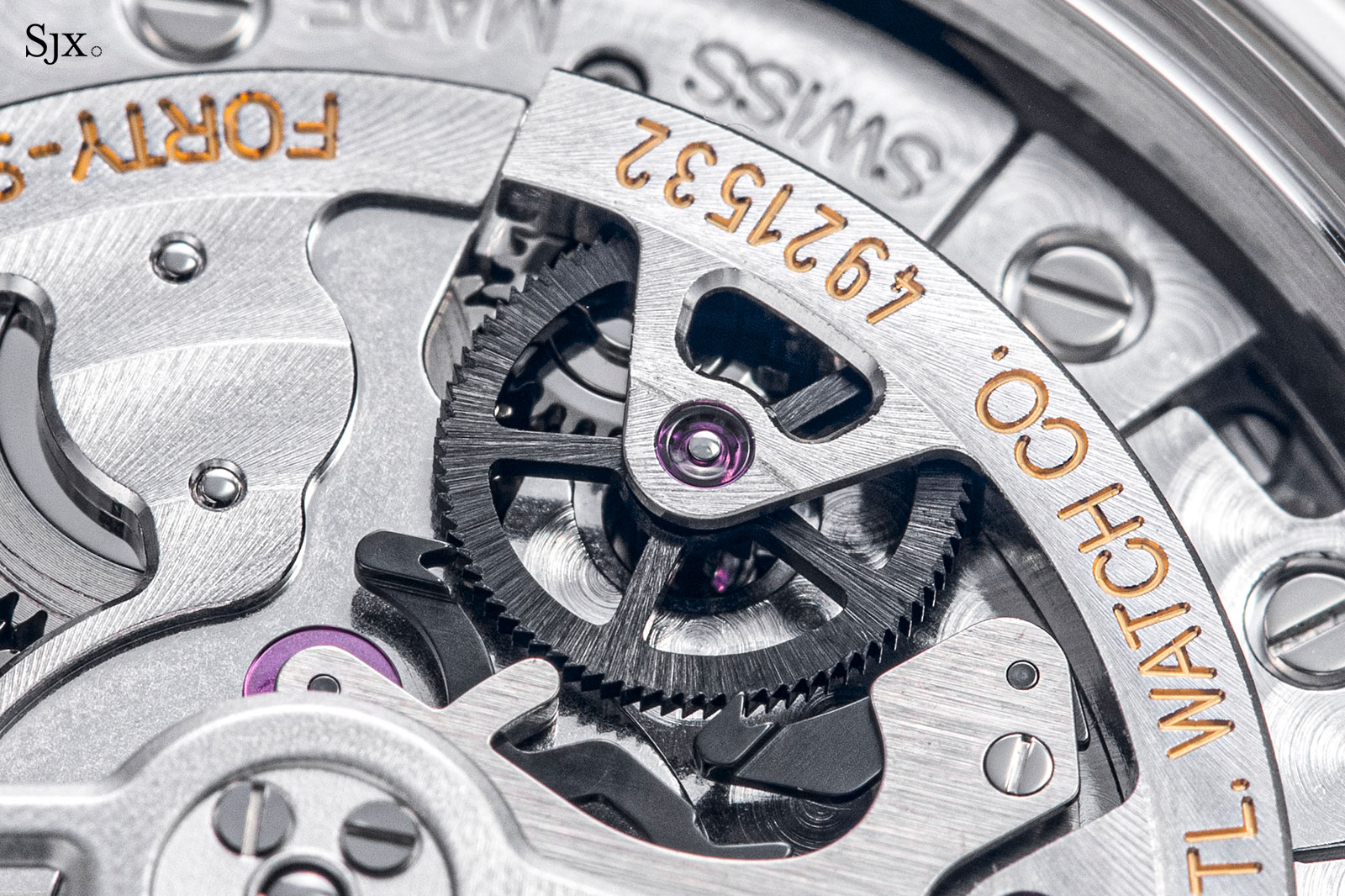
The ceramic components of the Pellaton mechanism
Concluding thoughts
Priced at US$24,000 in stainless steel and US$33,500 in gold, the new perpetual is amongst the most affordable perpetual calendars in its present catalogue powered by an in-house movement, making it a value proposition for someone seeking a perpetual calendar that’s more sophisticated than the ETA-powered offerings at the entry-level of the category.
Key Facts and Price
IWC Portofino Perpetual Calendar
Ref. IW344601 (steel)
Ref. IW344602 (5n red gold)
Diameter: 40 mm
Height: 12.7 mm
Material: Stainless steel or 18k 5n gold
Crystal: Sapphire
Water resistance: 50 m
Movement: Cal. 82650
Functions: Pellaton automatic winding system with a perpetual calendar with display for the date, day, month, leap year, and a perpetual moon phase with central hacking seconds
Frequency: 28,800 beats per hour (4 Hz)
Winding: Automatic
Power reserve: 60 hours
Strap: Blue calfskin strap with buckle
Availability: Now at IWC boutiques, IWC.com, and retailers
Price: US$24,000 for stainless steel, US$33,500 for rose gold
For more, visit IWC.com.
Back to top.

